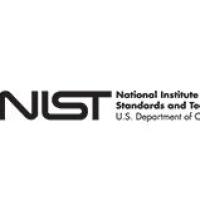Water Maze Testing to Identify Compounds for Cognitive Enhancement
互联网
- Abstract
- Table of Contents
- Materials
- Figures
- Literature Cited
Abstract
The water maze task is widely used to evaluate spatial learning and memory in rodents. The basic paradigm requires an animal to swim in a pool until it finds a hidden escape platform. The animals learn to find the platform using extra?maze cues and, after several training trials, are able to swim directly to it from any starting location. Memory for the platform location is assessed by examining swimming behavior with the platform removed from the maze, while sensory, motor and motivational aspects of the task can be examined by making the platform visible to the animals. Described in this unit is the use of the water maze to identify rats with age?related spatial learning and memory impairments. The efficacy of potential pharmacological treatments for alleviating these deficits is then evaluated. This assay provides a means for studying the neurobiology of spatial learning and memory, and to identify potential pharmacotherapies for treating memory?impaired humans. While the use of aged rats is described in this unit, the protocol can also be employed for compound screening with other rodent models that have spatial learning and memory impairments, such as transgenic mouse models of Alzheimer's disease. Curr. Protoc. Pharmacol. 59:5.63.1?5.63.12. © 2012 by John Wiley & Sons, Inc.
Keywords: water maze; spatial memory; aging; cognition rodent
Table of Contents
- Introduction
- Strategic Planning
- Basic Protocol 1: Testing Cognition Enhancers Using Aged Rats in the Water Maze
- Commentary
- Literature Cited
- Figures
Materials
Basic Protocol 1: Testing Cognition Enhancers Using Aged Rats in the Water Maze
Materials
|
Figures
-
Figure 5.63.1 A typical water maze arrangement. The pool (1.6 m in diameter) is filled with water colored with nontoxic white latex paint. Large and distinctive visual cues are located around the pool. A rat is standing on the hidden escape platform. The animal's fur has been dyed black to simplify tracking. The camera for the tracking system is positioned over the pool. It is not visible in this picture. View Image -
Figure 5.63.2 (A ) Diagram of the water maze showing the position of the escape platform (light gray) and surrounding circle (dotted line) indicating the annulus‐40, a circular area 40 cm in diameter centered over the platform location, used as one potential measure in the analysis of probe trials. The crossed dashed lines indicate the imaginary division of the pool into four quadrants. Trial start positions (1‐3) are shown. (B ) Sequence of start position locations used during training. View Image -
Figure 5.63.3 (A ) Water maze training. Typical performances of young and aged male Fischer 344 rats in the water maze. Young rats quickly learn the location of the hidden platform. Old rats show varying levels of competence. Comparing the performance of individual aged animals to the mean for the young rats over the last three training days identifies populations of aged‐unimpaired (AU; <0.5 s.d. from the young group) and aged‐impaired (AI; >2.0 s.d. from the young group) animals. AI rats are used for subsequent evaluation of putative cognitive enhancers. (B ) Probe trial performances on day 5. Time spent in the annulus‐40 is significantly reduced in AI rats (top). The swim paths are not significantly different between groups (bottom), demonstrating that the reduced dwell time in the annulus‐40 by AI rats was not simply due to slower swim speed during the probe trial. n = 12 to 15 per group; * = p < 0.05 versus vehicle. View Image -
Figure 5.63.4 Compounds shown to improve spatial memory in AI rats. Values represent means for all trials over 3 consecutive days of testing. For the purposes of comparing relative efficacy, the results of the most effective dose of each compound are shown. Primary mechanisms of action: donepezil (acetylcholinesterase inhibitor); GTS‐21 (nicotinic cholinergic α7 partial agonist); SB271046 (serotonin 5‐HT6 antagonist); BIBN‐99 (muscarinic cholinergic m2 antagonist); AR‐R17779 (nicotinic cholinergic α7 full agonist); MEM 1003 (L‐type calcium channel blocker); RG3487 (nicotinic cholinergic α7 partial agonist). n = 6 to 10 per group; * = p < 0.05 versus vehicle. View Image
Videos
Literature Cited
| Literature Cited | |
| Antonova, E., Parslow, D., Brammer, M., Dawson, G.R., Jackson, S.H., and Morris, R.G. 2009. Age‐related neural activity during allocentric spatial memory. Memory 17:125‐143. | |
| Astur, R.S., Taylor, L.B., Mamelak, A.N., Philpott, L., and Sutherland, R.J. 2002. Humans with hippocampus damage display severe spatial memory impairments in a virtual Morris water task. Behav. Brain Res. 132:77‐84. | |
| Barten, D.M., Fanara, P., Andorfer, C., Hoque, N., Wong, P.Y., Husted, K.H., Cadelina, G.W., Decarr, L.B., Yang, L., Liu, V., Fessler, C., Protassio, J., Riff, T., Turner, H., Janus, C.G., Sankaranarayanan, S., Polson, C., Meredith, J.E., Gray, G., Hanna, A., Olson, R.E., Kim, S.H., Vite, G.D., Lee, F.Y., and Albright, C.F. 2012. Hyperdynamic microtubules, cognitive deficits, and pathology are improved in tau transgenic mice with low doses of the microtubule‐stabilizing agent BMS‐241027. J. Neurosci. 32:7137‐7145. | |
| Buresová, O., Krekule, I., Zahálka, A., and Bures, J. 1985. On‐demand platform improves accuracy of the Morris water maze procedure. J. Neurosci. Meth. 15:63‐72. | |
| Colombo, P.J. and Gallagher, M. 2002. Individual differences in spatial memory among aged rats are related to hippocampal PKCgamma immunoreactivity. Hippocampus 12:285‐289. | |
| Gallagher, M., Burwell, R.D., and Burchinal, M. 1993. Severity of spatial learning impairment in aging: development of a learning index for performance in the Morris water maze. Behav. Neurosci. 107:618‐626. | |
| Hersi, A.I., Rowe, W., Gaudreau, P., and Quirion, R. 1995. Dopamine D1 receptor ligands modulate cognitive performance and hippocampal acetylcholine release in memory‐impaired aged rats. Neuroscience 69:1067‐1074. | |
| Maei, H.R., Zaslavsky, K., Teixeira, C.M., and Frankland, P.W. 2009. What is the most sensitive measure of water maze probe test performance? Front. Integr. Neurosci. 3:4. | |
| Markowska, A.L., Koliatsos, V.E., Breckler, S.J., Price, D.L., and Olton, D.S. 1994. Human nerve growth factor improves spatial memory in aged but not in young rats. J. Neurosci. 14:4815‐4824. | |
| Millan, M.J., Agid, Y., Brüne, M., Bullmore, E.T., Carter, C.S., Clayton, N.S., Connor, R., Davis, S., Deakin, B., DeRubeis, R.J., Dubois, B., Geyer, M.A., Goodwin, G.M., Gorwood, P., Jay, T.M., Joëls, M., Mansuy, I.M., Meyer‐Lindenberg, A., Murphy, D., Rolls, E., Saletu, B., Spedding, M., Sweeney, J., Whittington, M., and Young, L.J. 2012. Cognitive dysfunction in psychiatric disorders: Characteristics, causes and the quest for improved therapy. Nat. Rev. Drug Discov. 11:141‐168. | |
| Morgan, D., Diamond, D.M., Gottschall, P.E., Ugen, K.E., Dickey, C., Hardy, J., Duff, K., Jantzen, P., DiCarlo, G., Wilcock, D., Connor, K., Hatcher, J., Hope, C., Gordon, M., and Arendash, G.W. 2000. A beta peptide vaccination prevents memory loss in an animal model of Alzheimer's disease. Nature 408:982‐985. | |
| Morris, R.G.M. 1981. Spatial localization does not require the presence of local cues. Learn. Motiv. 12:239‐260. | |
| Morris, R. 1984. Developments of a water‐maze procedure for studying spatial learning in the rat. J. Neurosci. Meth. 11:47‐60. | |
| Ohta, H., Arai, S., Akita, K., Ohta, T., and Fukuda, S. 2012. Effects of NK‐4 in a transgenic mouse model of Alzheimer's disease. PLoS One 7:e30007. | |
| Owen, E.H., Logue, S.F., Rasmussen, D.L., and Wehner, J.M. 1997. Assessment of learning by the Morris water task and fear conditioning in inbred mouse strains and F1 hybrids: Implications of genetic background for single gene mutations and quantitative trait loci analyses. Neuroscience 80:1087‐1099. | |
| Rowe, W.B., Blalock, E.M., Chen, K.C., Kadish, I., Wang, D., Barrett, J.E., Thibault, O., Porter, N.M., Rose, G.M., and Landfield, P.W. 2007. Hippocampal expression analyses reveal selective association of immediate‐early, neuroenergetic, and myelinogenic pathways with cognitive impairment in aged rats. J. Neurosci. 27:3098‐3110. | |
| Schoenfeld, R., Moenich, N., Mueller, F.J., Lehmann, W., and Leplow, B. 2010. Search strategies in a human water maze analogue analyzed with automatic classification methods. Behav. Brain Res. 208:169‐177. | |
| Spencer, R.L., O'Steen, W.K., and McEwen, B.S. 1995. Water maze performance of aged Sprague‐Dawley rats in relation to retinal morphologic measures. Behav. Brain Res. 68:139‐150. | |
| Spooner, R.I., Thomson, A., Hall, J., Morris, R.G., and Salter, S.H. 1994. The Atlantis platform: A new design and further developments of Buresova's on‐demand platform for the water maze. Learn. Mem. 1:203‐211. | |
| Tombaugh, G.C., Rowe, W.B., Chow, A.R., Michael, T.H., and Rose, G.M. 2002. Theta‐frequency synaptic potentiation in CA1 in vitro distinguishes cognitively impaired from unimpaired aged Fischer 344 rats. J. Neurosci. 22:9932‐9940. | |
| Veng, L.M., Granholm, A.C., and Rose, G.M. 2003. Age‐related sex differences in spatial learning and basal forebrain cholinergic neurons in F344 rats. Physiol. Behav. 80:27‐36. | |
| Vorhees, C.V. and Williams, M.T. 2006. Morris water maze: procedures for assessing spatial and related forms of learning and memory. Nat. Protoc. 1:848‐858. | |
| Wallace, T.L., Callahan, P.M., Tehim, A., Bertrand, D., Tombaugh, G., Wang, S., Xie, W., Rowe, W.B., Ong, V., Graham, E., Terry, A.V. Jr., Rodefer, J.S., Herbert, B., Murray, M., Porter, R., Santarelli, L., and Lowe, D.A. 2011. RG3487, a novel nicotinic α7 receptor partial agonist, improves cognition and sensorimotor gating in rodents. J. Pharmacol. Exp. Ther. 336:242‐253. |









